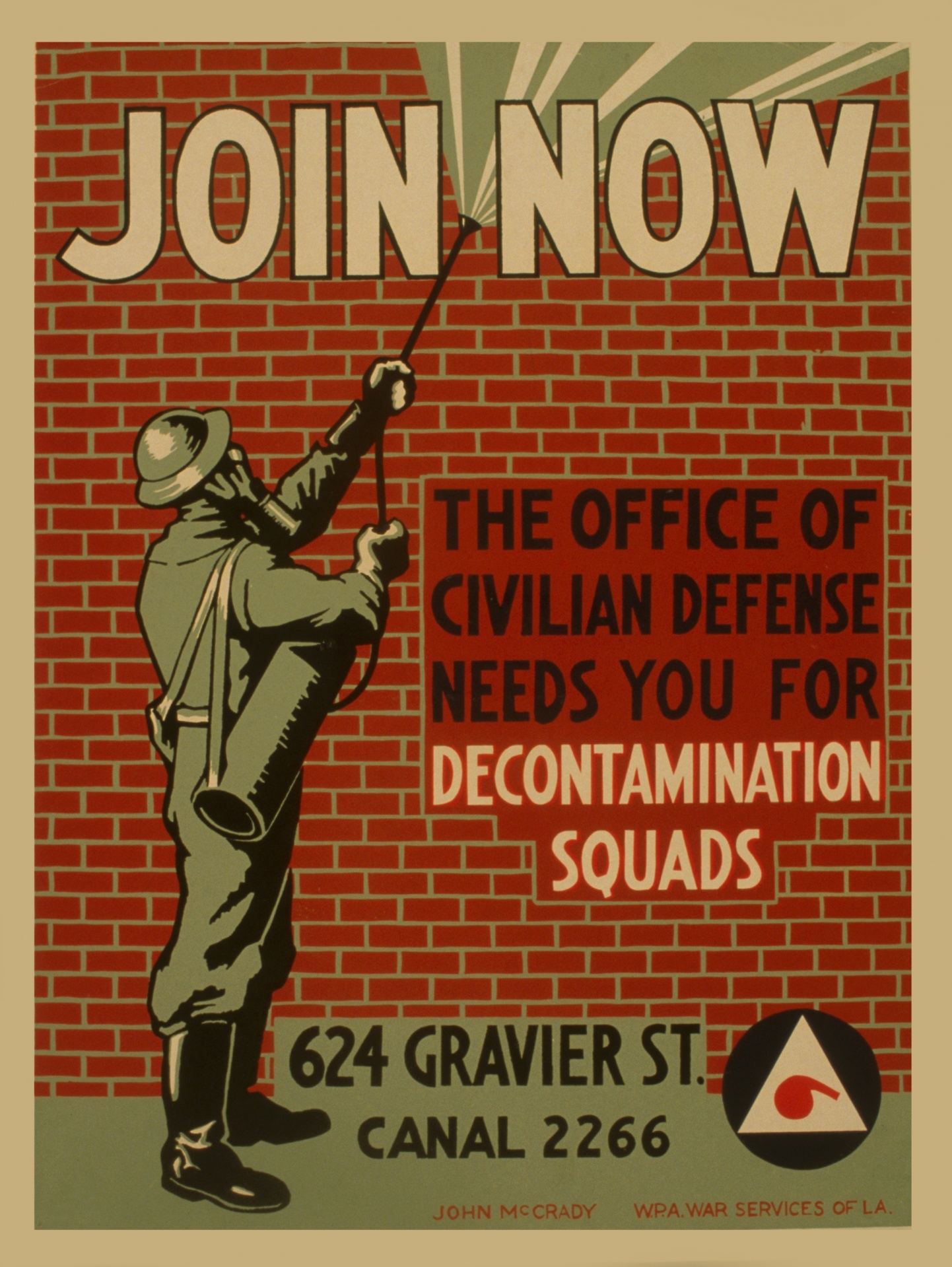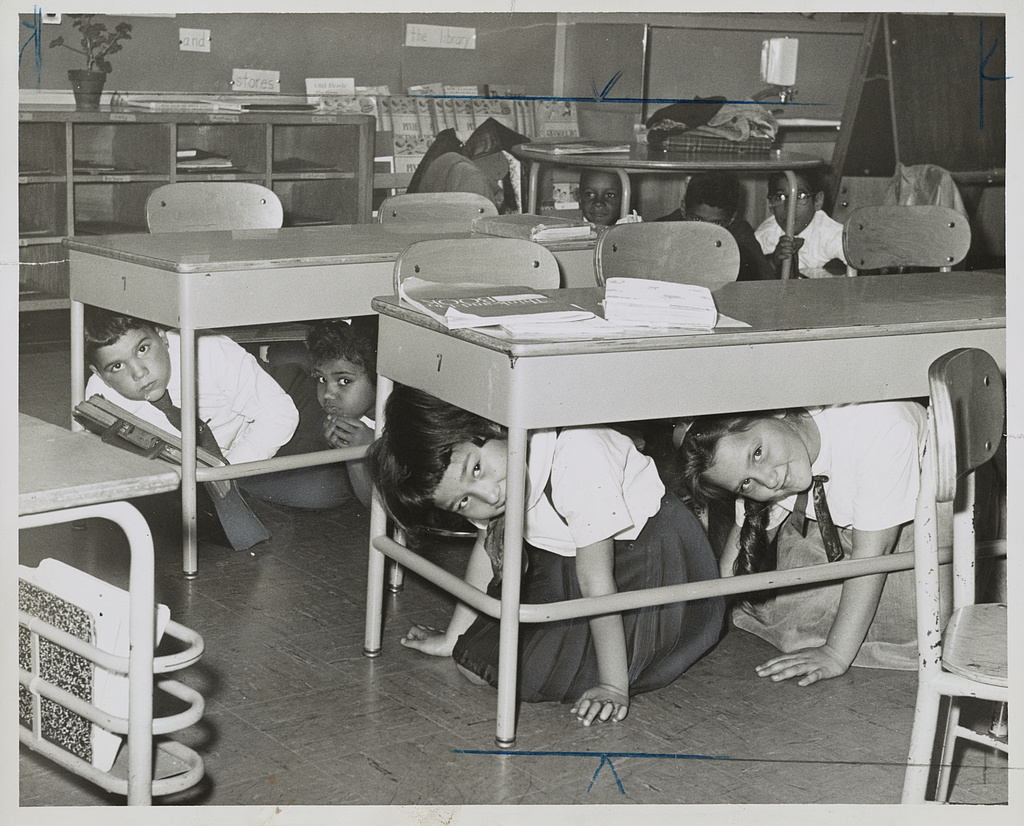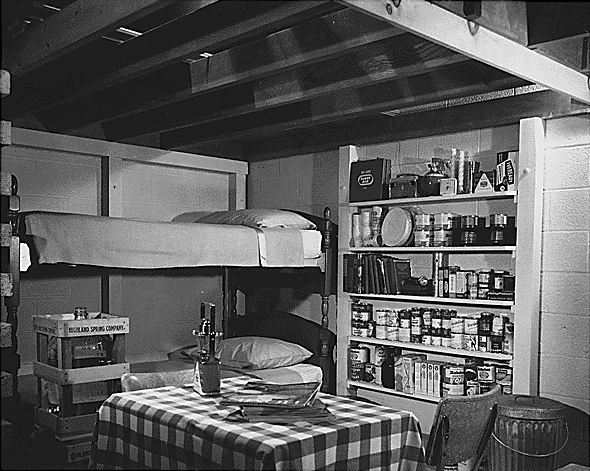During the Cold War, there was heightened tension between the US and Soviet Union. This was caused and amplified by the arms race of the mid- to late-19th century, which saw both world-powers competing to develop increasingly deadlier weapons of mass destruction. The arms race eventually culminated in both nations developing the hydrogen bomb in the early- to mid-1950s. With these advancements, the fires of paranoia were fueled, and a red scare fell over the nation, and a sense of impending doom grew as citizens worried about what would occur as a result of this global feud.
- Red Scare: the promotion of a widespread fear of a potential rise of communism or anarchism that occured in the US during the Cold War.

As a response to the increasing power of the Soviet Union, the US developed many organizations and tacticts to prepare civilians for, what seemed to be, the inevitability of nuclear war, and the nuclear fallout that would follow. Some of these organizations included the US Information Agency, created in 1953, the US Arms Control and Disarmament Agency, and the Peace Corps, both created in 1961. However, the most prominent homefront preparatory program was the Office of Civilian Defense.

The Office of Civilian Defense, created in 1941, was a federal emergency war agency that was responsible for the coordination of state and federal measures to protect civilians in case of a war emergency. The agency's relevance peaked during the 1950's during the tumultuous early years of the Cold War.


The Office of Civilian Defense was repsonsible for the creation and propagation of a plethora of preparatory and precautionary measures to be implemented by the American populous. After the agency received a fraction of its requested funding the goal of the agency was changed to put the burden of survival on the populous.
The agency experienced many reconfigurations during its existance, changing to the Office of Civil and Defense Mobilization, then to the Office of Civil Defense, later to the Office of Emergency Planning, and finally to the Office of Emergency Preparedness, before being abolished in 1973. Nevertheless, the homefront programs that the agency created are deeply ingrained in the zeitgeist of the Cold War era. Programs like "Duck and Cover" and the mass dissemination of nuclear preparedness through the construction of household bunkers.
What was 'Duck and Cover'?

How did American Households Prepare for Fallout?
Many pamphlets and videos were created by different government agencies that gave advice on nuclear fallout survival. The promotion of fallout shelters was meant to put the public more at ease.
Link here to a PDF of the Family Fallout Shelter pamphlet.
- Leo A Hoegh, Director of the Office of Civil and Defense Mobilization

While there was widely publicized promotion for the construction of household fallout shelters, how many people actually supported them. In 1963 the following data was collected on the percentage of people in favor of fallout shelters.
